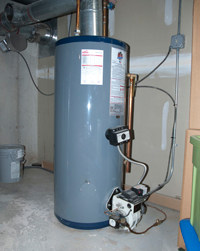How do you really feel with regards to What Kind of Maintenance Do Water Heaters Need??

Warm water is necessary for everyday convenience, whether it's for a revitalizing shower or cleaning dishes. To ensure your hot water system runs successfully and lasts longer, routine upkeep is essential. This post offers practical pointers and insights on just how to maintain your home's hot water system to prevent disruptions and expensive repair work.
Introduction
Keeping your home's warm water system could appear daunting, yet with a couple of basic steps, you can ensure it runs efficiently for many years to find. This overview covers everything from recognizing your warm water system to do it yourself maintenance ideas and recognizing when to call specialist assistance.
Significance of Maintaining Your Hot Water System
Routine upkeep not just expands the life-span of your hot water system yet likewise ensures it runs successfully. Ignoring upkeep can result in decreased performance, higher energy costs, and also premature failure of the system.
Indicators Your Warm Water System Requirements Upkeep
Knowing when your warm water system needs interest can avoid significant concerns. Look out for indicators such as irregular water temperature level, weird sounds from the heating unit, or rusty water.
Understanding Your Hot Water System
Before diving right into upkeep tasks, it's handy to comprehend the fundamental parts of your hot water system. Normally, this includes the water heater itself, pipelines, anode rods, and temperature controls.
Monthly Upkeep Tasks
Normal monthly checks can aid catch minor issues before they escalate.
Purging the Water Heater
Flushing your hot water heater eliminates debris build-up, boosting effectiveness and prolonging its life.
Monitoring and Replacing Anode Rods
Anode poles protect against corrosion inside the container. Evaluating and changing them when worn is crucial.
Examining and Changing Temperature Level Settings
Readjusting the temperature settings guarantees ideal performance and security.
DIY Tips for Maintenance
You can execute several upkeep jobs on your own to keep your warm water system in leading condition.
Checking for Leaks
Frequently inspect pipelines and connections for leakages, as these can cause water damage and higher bills.
Testing Pressure Alleviation Valves
Examining the pressure relief valve ensures it functions properly and protects against extreme pressure buildup.
Shielding Pipes
Insulating warm water pipes decreases warm loss and can conserve power.
When to Call an Expert
While do it yourself maintenance is beneficial, some problems require professional knowledge.
Complicated Concerns Needing Specialist Assistance
Examples include major leaks, electrical problems, or if your water heater is constantly underperforming.
Routine Specialist Upkeep Conveniences
Professional upkeep can consist of detailed evaluations, tune-ups, and making certain conformity with security requirements.
Verdict
Routine upkeep of your home's hot water system is essential for effectiveness, longevity, and expense financial savings. By adhering to these suggestions and understanding when to seek professional assistance, you can ensure a trusted supply of hot water without unforeseen disturbances.
How to Maintain an Instant Hot Water Heater
Before tinkering with your hot water heater, make sure that it’s not powered on. You also have to turn off the main circuit breaker and shut off the main gas line to prevent accidents. Also turn off the water valves connected to your unit to prevent water from flowing into and out of the appliance. 2. When you’re done, you have to detach the purge valves’ caps. These look like the letter “T†and are situated on either side of the water valves. Doing so will release any pressure that has accumulated inside the valves while at the same time avoid hot water from shooting out and burning your skin. 3. When the purge valves’ caps are removed, you have to connect your hosing lines to the valves. Your unit should have come with three hoses but if it didn’t, you can purchase these things from any hardware or home repair shops. You can also get them from retail stores that sell water heating systems. Read the user’s manual and follow it to complete this task properly. When the hosing lines are connected, open the purge port’s valves. 4. You should never use harsh chemical cleaners or solutions when cleaning your unit. Make use of white vinegar instead. It should be undiluted and you’ll probably use about 2 gallons. 5. Now flush your water heater. This task should probably take about 40 minutes. We can’t give you specific directions for this because the procedure is carried out depending on the type, model and brand of your heater. With that being said, refer to the user’s manual. 6. When you’re done draining the unit, you have to turn off the purge port valves again. Remove the hosing lines that you earlier installed on each of the water valves. Put the valve caps (purge port) back in their respective places and be very careful so as not to damage the rubber discs that are found inside these caps. 7. Now that everything’s back in place, check your user’s manual again to find out how to reactivate your water heating system. 8. Once it is working, turn one of your hot water faucets on just to let air pass through the heater’s water supply pipes. Leave the tap on until water flows smoothly out of it. https://www.orrplumbing.com/blog/2014/september/how-to-maintain-an-instant-hot-water-heater/

As a fervent reader about How to Maintain a Hot Water Heater in a Few Simple Steps, I thought sharing that excerpt was smart. For those who enjoyed reading our blog entry kindly make sure you remember to pass it around. Kudos for your time. Revisit us soon.
Call Today